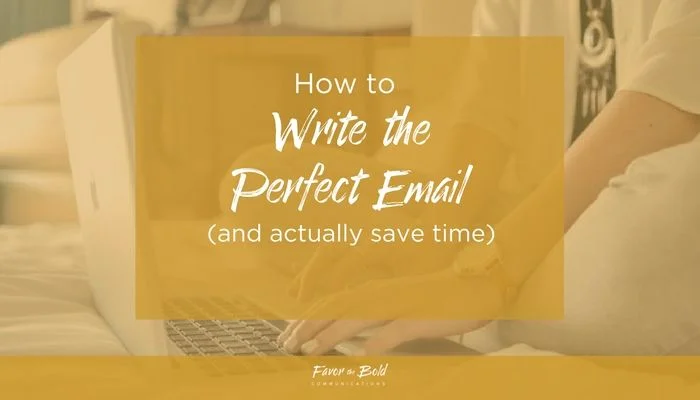I have to admit, I kind of hate the term “dream client.” It just feels so woowoo. Like, it would go hand-in-hand with manifesting, positive affirmations and visualization. Which… meh.
But “ideal client”? That’s another story.
Having a clear, targeted ideal client should be part of every business’ strategy-- no manifesting required. So let’s talk about the why, what and how of getting more of those ideal clients-- and why they aren’t “dreams.”
1. Know why you need an ideal client
If I’m honest (and I’m always honest), ideal clients and dream clients are pretty much the same thing on the surface: both are the target audience you’re trying to reach with your offering.
But there’s a subtle difference.
Your “dream client” is all about you-- who you dream about working with.
But your ideal client? It’s about them-- who is the ideal person to target with your offering.
Now, you might be thinking, “Yeah, but why does that matter? I need any client I can get, I’m nowhere near worrying about whether or not they’re ideal.”
But that’s just the thing. You don’t focus on ideal clients once you have enough work, you focus on ideal clients so you get enough work.
Here’s how.
The only way to sell what you offer is to show someone why they need it-- and the only way to do that is to know them well enough to know why they need it.
And if you don’t know exactly who you’re talking to? You’ll have no idea why they really need what you offer-- and won’t be able to effectively sell to them.
If you’re trying to sell to “anyone who needs it,” you’ll be stuck using wide generalizations, vague results and unfocused promises.
Which, let’s face it, won’t appeal to anyone.
But when you have a clear ideal client? You know exactly what to say on your website and in discovery calls to show why they need what you offer-- which makes selling to them a breeze.
And it’s not just about selling.
When you know how to create and sell the perfect offer to the client who needs it most, you’re more likely to get real results. And real results means your ideal clients will rave to other ideal clients-- creating a perpetual cycle of new work.
2. Know who your ideal client is
So you’re on the ideal client train. You know why you need an ideal client. You’re excited to get started. So you google “client avatar worksheet” and download the first thing you see, right?
Please, dear god, no.
Stop.
Before you start mapping out your ideal client’s age, marital status, hair color and favorite ice cream flavor, first take a step back and remember:
Your ideal client isn’t who you would love to help -- it’s who would love for you to help them.
If that sounds familiar, it’s because it’s the number one rule to effortlessly selling what you do.
Targeting people who are ready and willing to buy from you, who already know they need what you offer and who have the means to pay for it is the only way to attract potential clients and effectively sell to them.
So before you fill out all the “client avatar” worksheets, first ask yourself:
Who needs your offering the most?
Who will benefit most from what you offer?
Who is ready to buy from you right now?
Who can afford what you’re offering?
Figure that out first, and then you can worry about their favorite TV show.
3. Know how to show them you’re for them
When I first started my business, I heard the same advice over and over again: be clear about who you’re for. Hell, I even gave that advice.
And it still stands, but not the way I originally thought.
When I first started out, I thought it meant explicitly saying who you were for, i.e. “I help purpose-driven entrepreneurs and small business-owners who are ready to up-level their businesses….”
Which, let’s be honest, is kind of a mouthful.
Luckily, I realized the subtlety around that advice:
It’s not about saying who you help, it’s about showing who you help.
For example, you don’t necessarily need to say, “I help new creative female entrepreneurs blah blah blah.” Instead, you can show you help new creative female entrepreneurs with your copy, voice and visual identity.
Here’s how.
Focus on your ideal client’s biggest pain point and most desired result.
I know your service can help loads of different people with a range of problems, but this isn’t about you, it’s about them. Focus on what your ideal client needs, not what you offer.
For example, if you’re a coach and your ideal client is professional women on the brink of burn-out, focus on the main pain point (burn-out) and the main desired result (work-life balance.) Listing out every other issue your clients could potentially have (head-aches, marital problems, etc.) distracts from why they’re on your site in the first place and makes you look like a generalist-- not the expert they need.
Use your brand voice to attract those you most want to work with-- and repel the others.
This is where you can make it a little bit about you: who you want to work with and who you don't want to work with. But again, it doesn’t mean you have to be so explicit about it.
For example, my brand voice and writing style makes it clear that:
- I tell you what you need to hear, not what you want to hear.
- I haven’t met a four-letter word I didn’t love.
- I’m all about specific, strategic action, not woowoo inspiration.
I deliberately make these parts of me clear through my web copy, because I don’t want to work with people who can’t handle them.
Offer only what your ideal clients want to buy.
What you offer says a lot about who you’re for, so get focused. Stop trying to be everything to everyone-- and start being the expert for your ideal clients.
For example, if you’re an interior designer targeting high-end home renovations, don’t list on your website that you do design and decoration for events. Sure, you could offer event decoration, but you’d run the risk of turning off your ideal clients, who are looking for an expert they can trust for their high-end (and highly-expensive) renovations.
Remember, your clients are looking for specific results-- not a generalist who can “do it all.”
Because at the end of the day, that-- more than anything else-- is critical to your business’ long-term success: whether or not you get your clients the results they want.
Yes, you want to make sure you’re doing work you love with people you love, but if you want to build a sustainable, profitable business, you also need to be sure you’re getting the right results for the right audience.
And if you can identify the ideal client that makes those two overlap?
Your business will be pretty damn dreamy.











![How to boost your brand offline-- and get more business [Part 3]](https://images.squarespace-cdn.com/content/v1/5671d7a82399a31f114f4c55/1477565172008-2K7456WNHWYM99T12HTV/How+to+boost+your+brand+offline--+and+get+more+business.jpg)